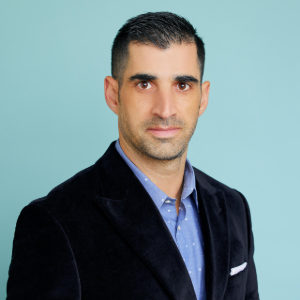 The ad tech industry saw a renewed surge in merger and acquisition (M&A) activity in 2021, which rolled into the new year with no signs of slowing down.
The ad tech industry saw a renewed surge in merger and acquisition (M&A) activity in 2021, which rolled into the new year with no signs of slowing down.
As CTV remains one of the hottest sectors for M&A, Daniel Elad, chief strategy officer at TheViewPoint (which was itself yesterday acquired by Tatari) shares his opinion on the underlying trends and makes forecasts for the market dynamics in the years to come.
Ad tech was back on investors’ radars in late 2020, when the marketplace started showing signs of consolidation, the trend that has been highlighting industry leaders in the otherwise over-fragmented space.
In 2020 and 2021, ad tech witnessed over 3,500 rounds of financing and almost 1,500 M&A deals, valued between $125 to $130B, according to Crunchbase data. Last year, the number of worldwide M&A transactions was double that of 2017 and the previous year. One of the biggest deals was Rubicon Project and Telaria forming Magnite, which reached a market cap of nearly $3.5 billion. Magnite went on to buy video supply-side platform SpotX, and by doing so became the world’s largest independent source of CTV and video inventory.
Other significant M&A deals included TransUnion acquiring digital analytics company Neustar for $3 billion, Fox broadcasting network investing $440 million in Tubi TV, and Integral Ad Science (IAS) joining the buying spree by spending $220 million on Publica and purchasing contextual advertising company ADmantX in order to accelerate its own growth.
Meanwhile Comcast’s FreeWheel acquisition of SaaS DSP Beeswax and XUMO, an ad-supported streaming service; Vista Equity’s purchase of programmatic advertising platform TripleLift; Tremor International’s deal with a CTV ad server Spearad and SSP Unruly; and Outbrain’s purchase of Video Intelligence all show clearly that the market is consolidating – often vertically rather than horizontally.
It is impossible not to mention the role of special purpose acquisition companies (SPACs) deals as well, such as those involving Flashtalking and AdTheorent. As more and more ad tech companies have gone public, the likes of Digital Turbine and Magnite have ramped up M&A, positioning themselves as leaders. And companies which have gone public via a SPAC have quickly pursued M&A themselves. Taboola took part in a 800 million USD acquisition of retail performance marketing business Connexity, following its initial public offering (IPO). And digital measurement platform DoubleVerify bought measurement and analytics company Openslate for $150 million within months of its IPO.
What’s driving consolidation?
Consolidation is a natural process for any ecosystem as fragmented as ad tech. However, from the examples above it is obvious that there are larger trends at play, as the big industry players are looking to implement new strategies, with video companies attempting to launch their own open exchanges, run private marketplaces or establish in-house DSPs.
But despite marketplace-driven efforts, many ad tech companies have still not been able to reach long-term sustainability as independent companies. Many are actively looking to join well-placed global businesses that can help them expand their operations.
Overall, there are three key reasons for this rapid market capitalization:
-
- The new reality – the pandemic has rapidly accelerated a number of evolutionary processes in the industry and made it the new reality faster than expected.
- Optimistic economic forecasts – the forecast for 2022, particularly in the US, the EU and LATAM countries have prompted big players to invest in ad tech companies.
- Stricter regulations – privacy laws and regulations are getting stricter across the globe, the future of effective audience targeting looks gloomy. The number of accessible opportunities to legally obtain and use first-party audience data in online advertising has been reducing, thus fuelling purchases in this sector.
Critics of consolidation say that it will slow down and overtime reduce innovation. These concerns are unjustified. Instead, it should create fertile ground for new market-disrupting startups, which will find an opportunity to occupy a vacant niche and build their name, just as TheViewPoint did in 2019 with our CTV-first SaaS solutions for CTV/OTT publishers.
Where Are We Headed?
This market activity isn’t likely to stop in the months or even years to come. In 2022, dynamics will most likely remain unchanged. And as acquirers fold their acquisitions into their own technologies, I expect we’ll see a boom of new ad tech solutions.
Looking at the type of acquired companies, the industry may expect to see innovation around software focusing on ad measurement, diversifying ad formats and ad delivery, building predictive models for more efficient attribution, automating inventory mapping, bidding and purchase and, of course, further developing immersive advertising.
It will be interesting to watch how 2022 unfolds. It started with Magnite acquiring Nth Party, a business specialising in secure audience data-sharing and analysis, and IAS announcing the acquisition of a content classification company Context.
But will it just be the big companies engaging in M&A this year? Not at all! The market is also paying attention to smaller businesses for an obvious reason: the ad tech solutions they’re offering are usually more affordable and easier to customise. That’s why 2022 might be the year for smaller M&A. These deals might not make quite so many headlines, but in the long term they will change the industry for the better.
It is also worth remembering that ad tech market dynamics forecasts for 2021-2025 predict digital ad spending growth will significantly increase in North America, Asia Pacific, and Western Europe. M&A will undoubtedly follow the money, and buyers will be interested first and foremost in the companies that ride this wave. Another way to attract attention is to demonstrate outstanding results in the slowly growing markets, such as the Middle East, Africa, and LATAM.
We’ve already seen significant acquisitions and consolidation since the beginning of 2022. Among them are the following:
- Aricoma Group has signed an acquisition agreement with Clearcode – a software development company from Poland. This step will allow Aricoma to diversify the range of their services in terms of machine learning and big data analytics.
- Innovid paid $160 million for the acquisition of a platform for ad measurement and delivery, TVSquared. This deal should enable significant improvements in TV measurement across various platforms providing broader opportunities to publishers, brands and agencies all over the world.
- Two leaders of the Spanish-language TV market, Univision and Televisa, merged.
- Sabio Holdings Inc, an umbrella company which owns Sabio Inc. DSP platform, has acquired Vidillion CTV SSP to enhance Sabio’s own offering and become a full-stack solution.
And just yesterday TheViewPoint announced its own acquisition by Tatari, a leading data and analytics platform for buying and measuring ads on both linear and streaming TV. The two companies’ combined technology will facilitate direct relationships between advertisers and publishers, promoting a more transparent and efficient media exchange. This cleaner supply path carries benefits for both sides: more granular supply-side data yields better measurement for brands, which in turn allows brands to select impressions that drive better outcomes and more demand for publishers.
More M&A activity is inevitable. The startups who want to benefit from the hot market must put themselves on the map by increasing their visibility and adopting a bolder marketing approach, which allows them to stand out among their peers. Meanwhile all market players should realise that there is nothing unusual in the M&As “supernatural” growth: the market is just recovering and catching up with the opportunities it missed in previous years.




